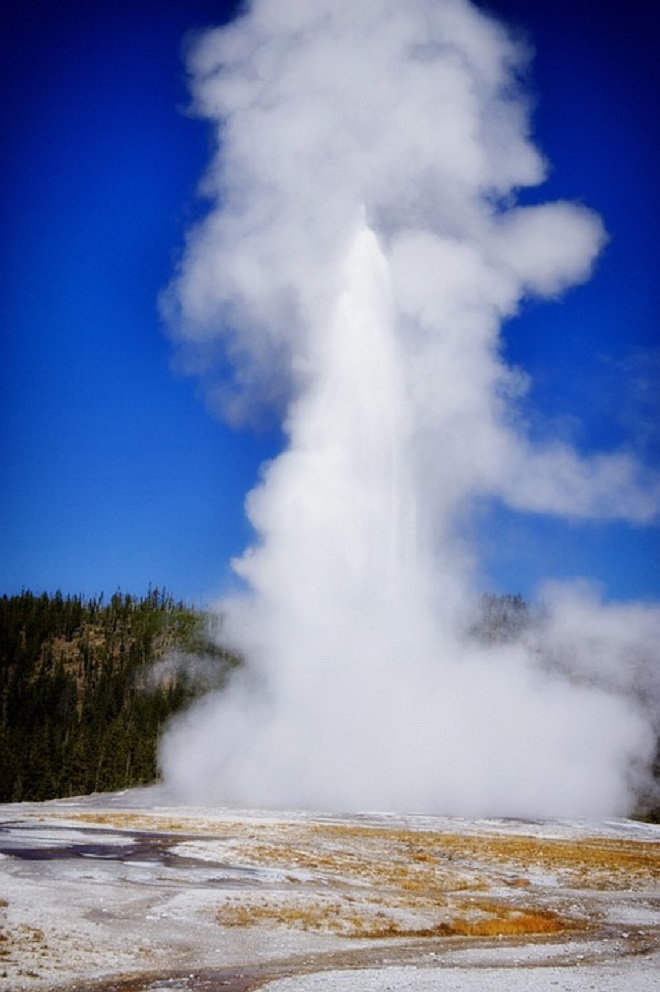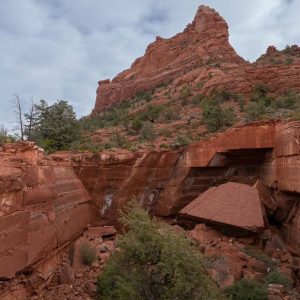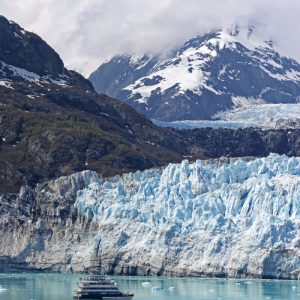 100vw, 696px” data-lazy-src=”https://acovalue.info/wp-content/uploads/2023/10/15-best-things-to-do-and-see-in-yellowstone-national-park-696×364-1.jpg” /><img decoding=)
Yellowstone National Park is located mainly in the state of Wyoming although small portions of the property are in Idaho and Montana. It is the United States’ first official national park and was established in 1872. It spans over 2.2 million acres so naturally, there is a lot to see and do here. From odd-smelling geysers, roaring waterfalls, and messy mud pots to beautiful hot springs and various wildlife sightings, here are 15 of the best things to do and see in Yellowstone National Park.
Contents
- 1. Watch Old Faithful spout
- 2. Get a bird’s eye view of the Grand Prismatic Spring
- 3. Cruise through the Lower Geyser Basin
- 4. Stroll along Yellowstone Lake or take a scenic boat ride
- 5. Learn all about the geysers in Norris Geyser Basin
- 66. See the great Gibbon Falls and River
- 7. Enjoy the Mammoth Hot Springs Terrace
- 8. See the Bison in Hayden Valley
- 9. Saddle up and visit the backcountry
- 10. Experience the Grand Canyon of Yellowstone from Artist Point
- 11. Spot wildlife in lovely Lamar Valley
- 12. Go hike Mount Washburn
- 13. Enjoy a western cookout
- 14. Stop for a superb sunset
- 15. Scan the sky for stars
1. Watch Old Faithful spout

Obviously, if you’re going to Yellowstone you simply must see the world-famous geyser known as Old Faithful. It’s named as such because it erupts faithfully every 90 minutes. Check the clock at the park’s Old Faithful Inn that accurately predicts the time of the eruptions. It might not be the world’s largest geyser but the eruptions, on average 130 feet high, are nonetheless impressive.
2. Get a bird’s eye view of the Grand Prismatic Spring
 100vw, 696px” data-lazy-src=”https://acovalue.info/wp-content/uploads/2023/10/2-3-696×466-1.jpg” /><img decoding=)
The Grand Prismatic Spring is situated in the park’s Midway Geyser Basin. It’s the United State’s largest hot spring. It is roughly 300 feet in diameter and about 121 feet deep.
The water here is a veritable collage of colors. Thus, it is said to be the park’s most photographed attraction. The center is cerulean blue and the edges are encircled with fiery oranges and deep reds.
The multi-colored effect is the result of pigmented thermophilic bacteria that live off of the minerals that are generated by geothermal activity. The bacteria’s color is a result of the water temperature. The center of this body of water is a bit too hot to support the bacteria’s life.
Expect crowds when the weather is good. While arriving early is usually a good idea, that is not the case here. There is often a significant amount of fog here in the morning on cooler days. The best time to visit is a little before 10 a.m. Park your vehicle at the Fairy Falls sign then hike to the overlook point. The hike may take you half an hour but there is no better place from where to see it.
3. Cruise through the Lower Geyser Basin
 100vw, 696px” data-lazy-src=”https://acovalue.info/wp-content/uploads/2023/10/3-3-696×466-1.jpg” /><img decoding=)
You can reach a number of the various thermal features of the worthwhile Lower Geyser Basin via the one-way 3-mile long Firehole Lake Drive. The Firehole Lake Drive can be found off of the Grand Loop between Madison and Old Faithful. You can see hot springs and geysers from both the drive and the boardwalk too.
4. Stroll along Yellowstone Lake or take a scenic boat ride
 100vw, 696px” data-lazy-src=”https://acovalue.info/wp-content/uploads/2023/10/4-3-696×464-1.jpg” /><img decoding=)
Yellowstone Lake is Yellowstone National Park’s biggest body of water. It is also North America’s official “largest freshwater lake above 7,000 feet.” The lake is usually frozen over before December.
It remains frozen through May. Therefore, the best time to visit is in summer. It is then that you can enjoy picnics on the shore, scenic strolls, and boat rides. Spend the night at the well-known Lake Yellowstone Hotel and take in the view of the brilliant sunset over the lake.
5. Learn all about the geysers in Norris Geyser Basin
 100vw, 666px” data-lazy-src=”https://acovalue.info/wp-content/uploads/2023/10/5-2-2.jpg” /><img decoding=)
The Norris Geyser Basin geysers admittedly do not erupt like the more famous Old Faithful. Nevertheless, this specific geothermal area is one of Yellowstone’s best spots to see geysers. Here you will see Steamboat Geyser.
It is the world’s highest active geyser. While it does not erupt regularly, when it does the show is tremendous. It shoots at least 300 feet up into the air!
66. See the great Gibbon Falls and River
 100vw, 696px” data-lazy-src=”https://acovalue.info/wp-content/uploads/2023/10/6-1-696×463-1.jpg” /><img decoding=)
Yellowstone National Park is home to a number of different waterfalls. Some travel bloggers favor both Tower Falls and Gibbon Falls. Ensconced on the Gibbon River, the great Gibbons falls drop about 84 feet in a slow descent. Located between Madison Junction and the Norris Geyser Basin, Gibbon Falls has a designated parking lot. It is close to the top of the falls and provides visitors with an impressive view of both the river and the falls.
7. Enjoy the Mammoth Hot Springs Terrace
 100vw, 696px” data-lazy-src=”https://acovalue.info/wp-content/uploads/2023/10/7-2-696×435-1.jpg” /><img decoding=)
Mammoth Hot Springs Terrace features travertine terraces resulting from centuries of very hot water bubbling up out of a faultline in the earth, slowly cooling and depositing calcium carbonate. There are a pair of terrace boardwalks you can use the Lower and the Upper. There are also almost 50 hot springs in the area too.
Hike from the Lower Terrace. If you wish to use the upper boardwalk you can reach it via the one-way Upper Terrace Drive and adjoining parking lot. The boardwalks are 1.5 miles long and let you see some truly picturesque portions of the park.
8. See the Bison in Hayden Valley
 100vw, 696px” data-lazy-src=”https://acovalue.info/wp-content/uploads/2023/10/8-2-696×461-1.jpg” /><img decoding=)
Hayden Valley is a verdant valley just north of Yellowstone Lake. Here you’re likely to see bears, bison, coyotes, and elk. If you visit early in the morning you might catch them bathing in the river.
Be sure to stop at Sulphur Spring (a.k.a. Crater Hill Geyser) and the Mud Geyser to witness the geothermal activities. Don’t forget Dragon’s Mouth either. It’s a popular turbulent hot spring where the hot water rhythmically sloshes in and out of the big cavern’s mouth bringing to mind the image of an annoyed dragon.
9. Saddle up and visit the backcountry
 100vw, 696px” data-lazy-src=”https://acovalue.info/wp-content/uploads/2023/10/9image-courtesy-of-yellowstonepark-com_-696×401-1.jpg” /><img decoding=)
Go horseback riding through the beautiful backcountry. While driving through the Grand Loop allows you to stop and check out all the park’s attractions, you still only see roughly two percent of the park’s 2.2 million acres. A trail ride is said to be the best way for horse lovers to see the backcountry. You can get a horse from the park stables near Canyon or Roosevelt Village. If you head out from the corral in Canyon Village you’ll be able to ride through a nice open meadow and by Cascade Creek through pine forests and other wooded areas.
10. Experience the Grand Canyon of Yellowstone from Artist Point
 100vw, 696px” data-lazy-src=”https://acovalue.info/wp-content/uploads/2023/10/10-2-696×464-1.jpg” /><img decoding=)
The famous Grand Canyon of Yellowstone Park is the result of many years of erosion and other such natural forces. It’s less than a 15-minute drive out of Canyon Village. It’s also one of the area’s favorite places for hiking.
This canyon is almost one mile wide and nearly 20 miles in length. Head to Artist Point located on the South Rim and Inspiration Point on the North Rim for incomparable views of the canyon’s oxidized and terracotta cliff walls. See the country’s longest undammed river running between the verdant v-shaped valley. Watch it as it meanders over 600 miles through the states of Montana, North Dakota and Wyoming.
11. Spot wildlife in lovely Lamar Valley
 100vw, 696px” data-lazy-src=”https://acovalue.info/wp-content/uploads/2023/10/11-1-696×463-1.jpg” /><img decoding=)
Those who have been, sometimes refer to Yellowstone’s Lamar Valley as “America’s Serengeti” because of all the animals you can see there. Bison are so common here they often cause traffic jams. Bring binoculars and look for bears, foxes, rabbits, and wolves too. After your safari be sure to stop in at the restful Roosevelt lodge and relax a bit.
12. Go hike Mount Washburn
 100vw, 696px” data-lazy-src=”https://acovalue.info/wp-content/uploads/2023/10/12wiki-696×464-1.jpg” /><img decoding=)
You’ll find Tower Falls in the northeastern section of Yellowstone close to Tower Junction. The falls are in the center of some hoodoos roughly two miles south of Tower-Roosevelt Junction. The best viewpoint is about 100 yards from the parking lot.
After this stop, take a drive to the Dunraven Pass. Park your car at the Dunraven Pass Trailhead. Next, hike the 3.1-mile trail (each way) to the 10,243-foot summit at Mount Washburn.
13. Enjoy a western cookout
 100vw, 696px” data-lazy-src=”https://acovalue.info/wp-content/uploads/2023/10/13image-courtesy-of-tioga-tours-696×464-1.jpg” /><img decoding=)
If you happen to be staying somewhere near Roosevelt, you can ride a horse or take a 30 to 45-minute covered wagon and have a real western dinner cookout. You’ll travel through sagebrush flats as you follow the same road used for the scheduled stagecoach rides.
The canvas-covered wagons you take to the cookout site all have padded bench seats. They are drawn by a pair of horses. The staff can even accommodate vegetarians and vegan but, come on, you’re supposed to be in the old west! (Still, if you insist be sure to give them advance notice.)
14. Stop for a superb sunset
 100vw, 696px” data-lazy-src=”https://acovalue.info/wp-content/uploads/2023/10/14-1-696×463-1.jpg” /><img decoding=)
Yellowstone has several exceptional lookout points on the way back from your trip to Lamar Valley to see a sunset. Sit and watch as the very sky turns stunning shades of gold, yellow, orange and purple as the sun slowly sets.
15. Scan the sky for stars
 100vw, 696px” data-lazy-src=”https://acovalue.info/wp-content/uploads/2023/10/15-1-696×463-1.jpg” /><img decoding=)
There is little light pollution here in Yellowstone National Park. That’s why it is so easy to see the stars in the sky here. If you happen to be staying in one of the local lodges, you need only drive between five and ten minutes out of the parking lots there in order to get a great view.
While you may want to see all the waterfalls and geysers as a way of getting the most out of your vacation, don’t forget it’s a vacation. Find time to relax too!



